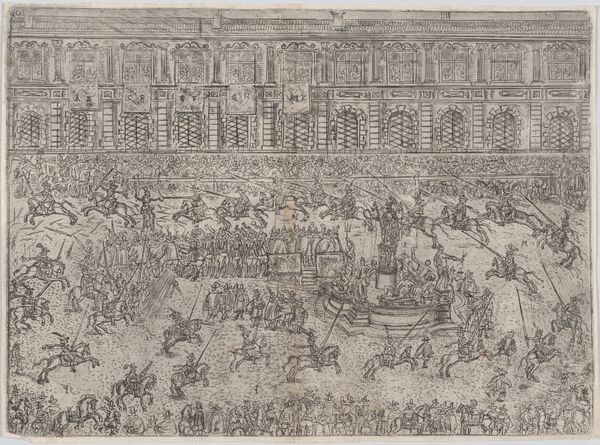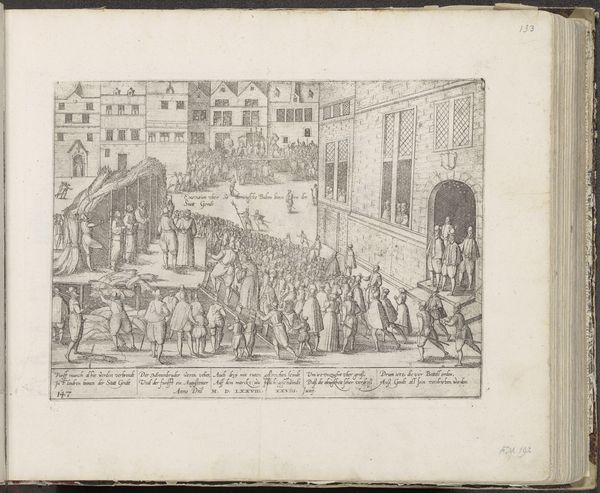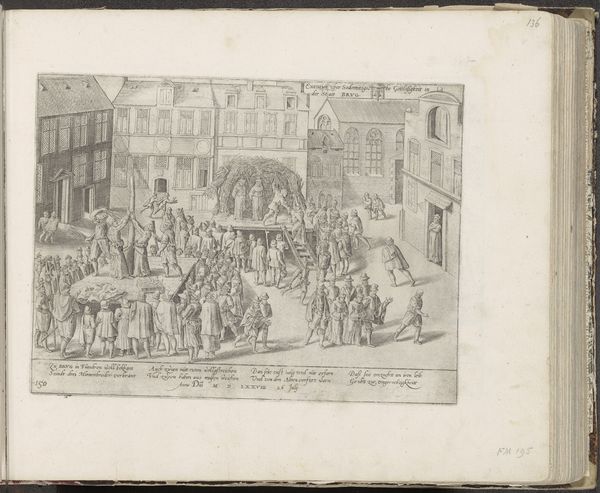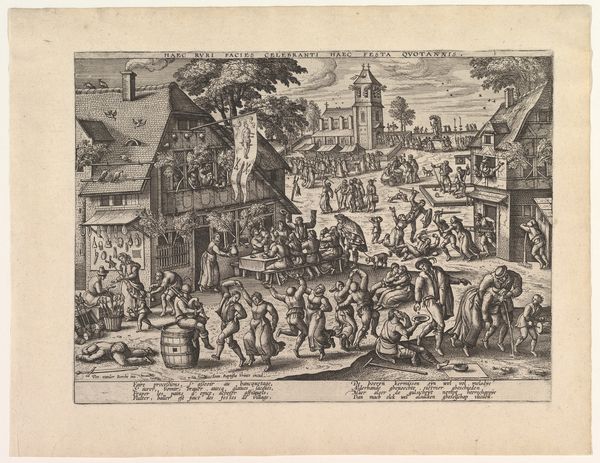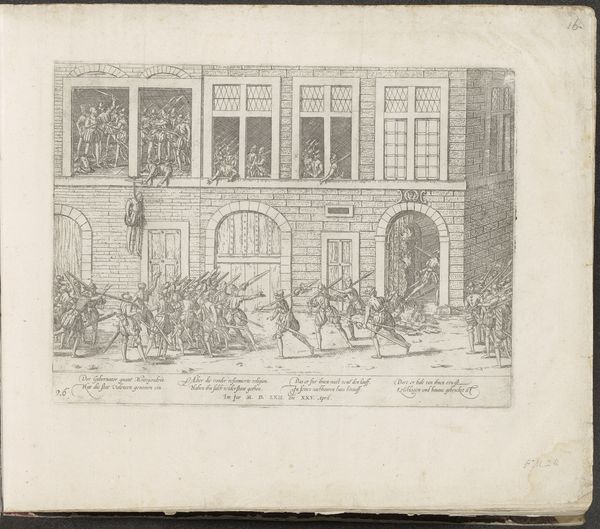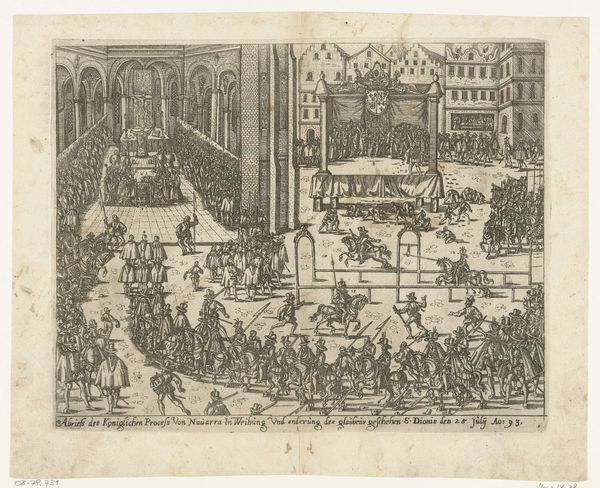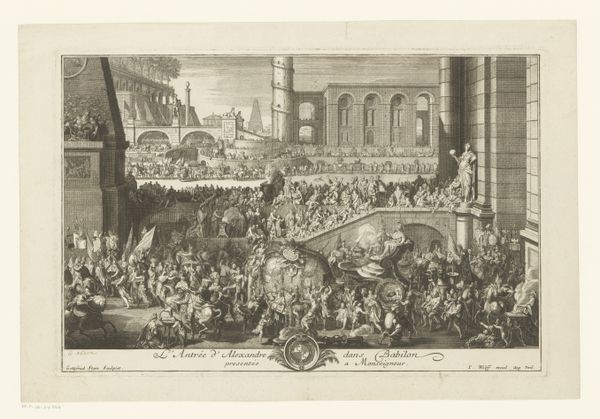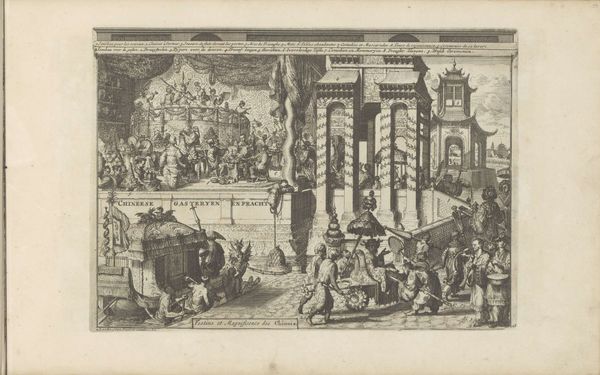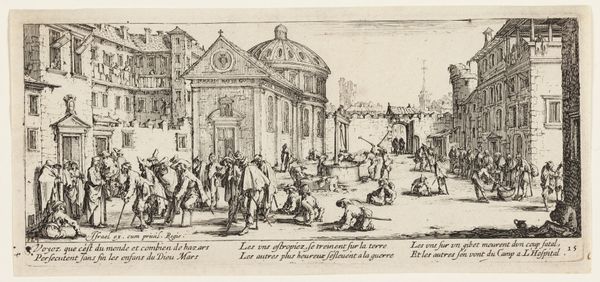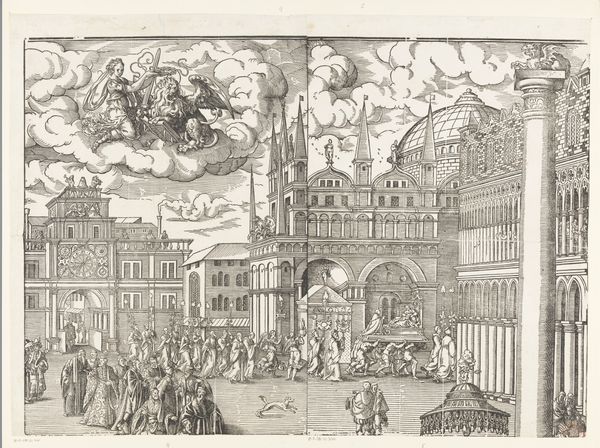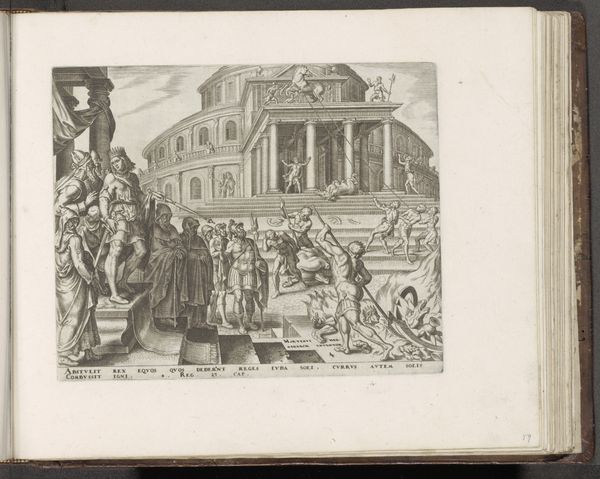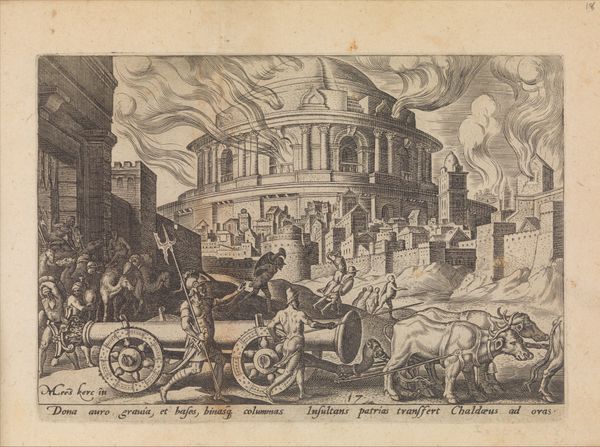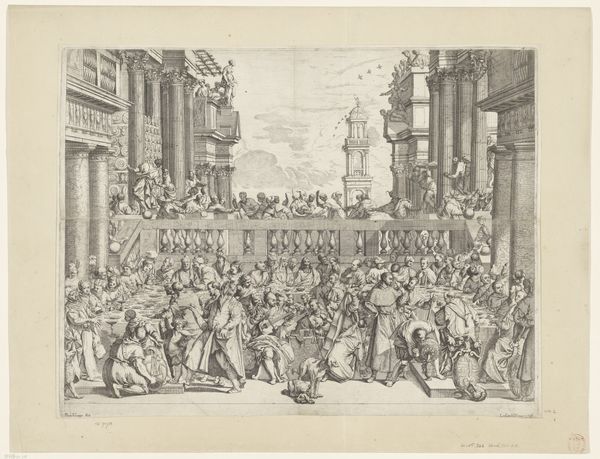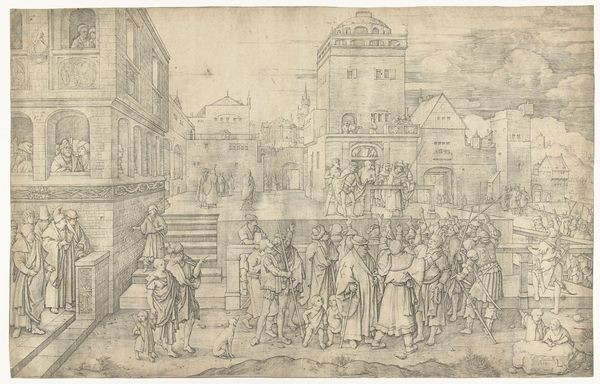
print, engraving
#
medieval
#
narrative-art
# print
#
pen sketch
#
etching
#
figuration
#
cityscape
#
engraving
Dimensions: 8 9/16 x 12 in. (21.75 x 30.48 cm) (plate)11 1/2 x 16 3/4 in. (29.21 x 42.55 cm) (sheet)
Copyright: Public Domain
Curator: This print, "Virgil the Sorcerer," dating from around 1460 to 1463, presents us with a complex visual narrative. Editor: My first thought is: look at the line work! So precise and detailed for what must have been an engraving. It makes the whole scene feel incredibly animated despite being static. Curator: Absolutely. The printmaking process itself is crucial to understanding this image's circulation and accessibility at the time. Prints allowed stories to spread far more widely, influencing public perception and collective imagination, specifically here regarding legends surrounding Virgil. Editor: And consider the labor involved. Every line etched, every detail rendered in this fashion! This was a deliberate, time-consuming process to reproduce this scene. I’m also curious about the paper itself: the texture, the source, its durability then versus now... Curator: That material context you raise underscores the significance of Virgil's portrayal here. Often mythologized for his alleged sorcery in medieval times, figures of power and knowledge were routinely viewed through moral and sometimes fearful lenses depending on the societal concerns surrounding authorship and authority. Editor: The architecture, too – that amphitheater clearly speaks to the relationship between power, spectacle, and viewership. Curator: Exactly. Look at who occupies the tower, and then reflect on who populates the ground plane, how are their roles determined within such space? Editor: I see how the social stratification is built right into the composition. The print is an artifact that also contains that relationship to production. That contrast becomes almost as important as the story being told. Curator: It prompts questions about how stories such as this shaped understandings of not only Virgil, but power and perception itself. Editor: Thinking about materiality reminds me that images like these had real impacts on what people believed and feared during that time. These types of prints influenced how artisans consumed knowledge of the day! Curator: A visual tool with an emotional register, then. Thanks for helping illuminate these social considerations alongside process, here. Editor: A valuable synthesis of looking at the medium and the message. Thanks!
Comments
minneapolisinstituteofart almost 2 years ago
⋮
Virgil (70-19 B.C.E.) was the most famous poet of his time, honored as a divinity after his death. In the popular tradition, the admiration for his literary work went along with that for his supposed powers as a sorcerer. The engraving tells the story of his spurned love for the Emperor’s daughter, who pretended to accept the poet’s advances. She agreed to receive him in secret by lifting him up to her room in a basket, but halfway up she left him dangling until daylight revealed his laughable predicament to the Romans. The prank laid bare the susceptibility of even such a revered man to ordinary human passions. The emperor saves Virgil from further punishments as the magical poet takes his revenge by extinguishing all fires in Rome, except that particular one residing between the legs of the Emperor’s daughter. And for years thereafter, the citizens knew that from that source they could kindle their flames. The tale, which had great popularity between the 14th and 16th centuries, captures the foolishness of all who are in love, but also underscores the malevolent power of lustful women.
Join the conversation
Join millions of artists and users on Artera today and experience the ultimate creative platform.
